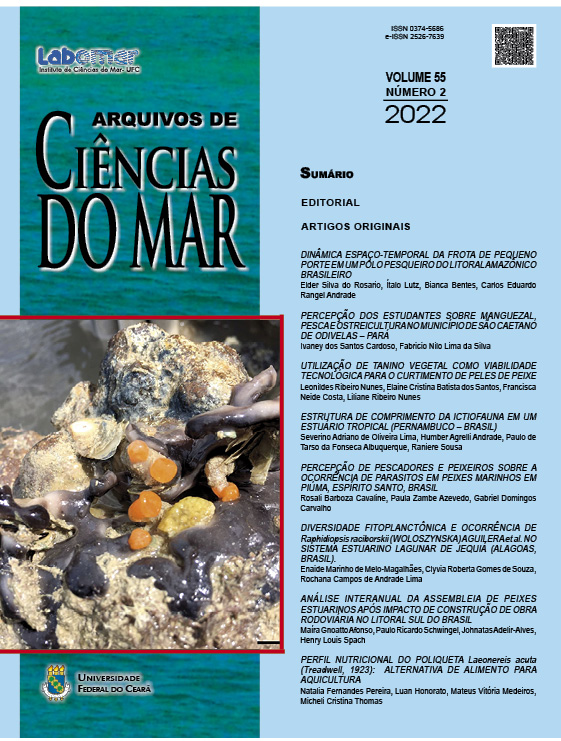Spatio-temporal dynamics of the small size fleet in a fishing pole of the brazilian amazonian coast
DOI:
https://doi.org/10.32360/acmar.v55i2.78117Abstract
In Amazon area, estuarine-marine fishing performed by the artisanal fleet has great representation in the production chain. We analyzed the displacement of small boats (BPP) operating from Vila dos Pescadores, Bragança-PA, between the years 2004 and 2015. Data of landings, days and fishing gear, number of fishermen and area of operation were obtained. Two types of nets were observed, the “serreira” gillnet and the “gozeira” gillnetnet. Crews ranged from four to five fishermen, while fishing days lasted around five days, with an average of 25 trips per year. It was visualized that the BPP fleet presented two behaviors. Between 2004 and early 2013, fishing was concentrated in the gravel fishing ground, 30 to 40 nautical miles away from the Vila dos Pescadores. Later, in 2013, fleet migration occurred, with 2015 being the year of greatest concentration to the “boias” fishing grounds, distant 80 to 90 miles. With fishing concentrated specifically in the “boias”
fishing ground, there were significant reductions in the average annual production, indicating repetition of the decline in fish stocks. Changes in fishing area and target species interfered with the dynamics of displacement of the local fleet.
Keywords: Amazon, fishing community, fishing dynamics, artisanal fishing
Downloads
Downloads
Published
How to Cite
Issue
Section
License
Copyright (c) 2023 Arquivos de Ciências do Mar

This work is licensed under a Creative Commons Attribution 4.0 International License.
1. Proposta de Política para Periódicos de Acesso Livre
Autores que publicam nesta revista concordam com os seguintes termos:
- Autores mantém os direitos autorais e concedem à revista o direito de primeira publicação, com o trabalho simultaneamente licenciado sob a Licença Creative Commons Attribution que permite o compartilhamento do trabalho com reconhecimento da autoria e publicação inicial nesta revista.
- Autores têm autorização para assumir contratos adicionais separadamente, para distribuição não-exclusiva da versão do trabalho publicada nesta revista (ex.: publicar em repositório institucional ou como capítulo de livro), com reconhecimento de autoria e publicação inicial nesta revista.
- Autores têm permissão e são estimulados a publicar e distribuir seu trabalho online (ex.: em repositórios institucionais ou na sua página pessoal) a qualquer ponto antes ou durante o processo editorial, já que isso pode gerar alterações produtivas, bem como aumentar o impacto e a citação do trabalho publicado (Veja O Efeito do Acesso Livre).

